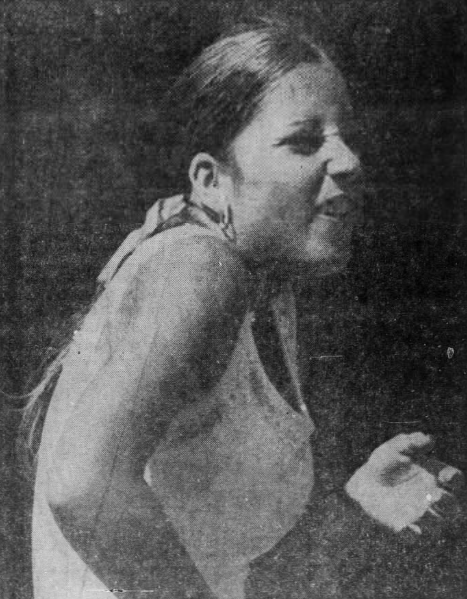The Wimbledon crowd had no trouble picking sides in the 1973 women’s semi-finals. Australian veteran Margaret Court was a three-time champion, including her dramatic 14-12, 11-9 defeat of Billie Jean King for the title three years earlier. She got the nod, both analytically and sentimentally, over 18-year-old American Chris Evert in the first match.
The second semi was an even easier call. If the Brits couldn’t have a local product in the final, they’d happily settle for Evonne Goolagong. The young Australian was a crowd favorite everywhere she went, and she had taken Wimbledon by surprise with her title in 1971. The London public wasn’t so positive about Billie Jean, the defending champion. Americans were widely thought to be responsible for the ATP boycott of the event, and King’s role with the new Women’s Tennis Association made her seem even guilty as well, if only by the flimsiest logic.
“I am tired of being portrayed as a villain,” Billie Jean told the press earlier that week. “We just wanted to form an association, and we have.” Still, emotions ran high, and the American wouldn’t get much love from the gallery.
On July 4th, both Evert and King silenced the crowd. Chrissie finished the job that she left undone at Roland Garros. No one gave her much of a chance against Court on grass: The last time the two women met on turf, Evert won just three games. But she seized an early lead, taking the first set, 6-1, with a dazzling array of lobs over her six-foot-tall opponent.
Margaret chose her spots more carefully in the second and evened the score with a 6-1 frame of her own. But on this day, she couldn’t overcome her reputation as a choker. By the third game of the decider, wrote Fred Tupper in the New York Times, “you could almost hear Margaret’s nerves twanging.” The former champion piled up nine double faults. There was none of the drama of the Paris final: Evert took the final set, 6-1.
In the second semi-final, King didn’t execute much better than Court had. “Her volleying was off-key,” Bud Collins wrote of Billie Jean, “her serving mediocre.” Not a good combination for a serve-and-volleyer.
Her mental game proved considerably stronger. The Old Lady could still befuddle an opponent. “Billie Jean has you in a tizzy,” said Goolagong. “I worried so much about where she was I took my mind off what I was doing.” The Aussie was right to worry: King was usually at the net, coming in behind every serve and many of her returns as well.
With an erratic King and the always unpredictable Goolagong, the match was topsy-turvy. Billie Jean won the first set, closing out the final five games with the loss of just six points. She reached match point at 5-4 in the second, but Evonne passed the attacking American for a winner. Goolagong rode her momentum to a break of serve and two more games, and the two ladies headed to a decider.
Finally, King earned another match point at 3-5 on the Australian’s serve. Goolagong chose this moment to play her most glittering tennis of the day, keeping herself alive with a nifty half-volley, an untouchable drop, and a series of shots that kicked up the sideline chalk. Billie Jean needed seven match points before Goolagong finally missed a backhand volley.
It wasn’t the outcome that the viewing public would have chosen, but it set up one heck of a final. Evert had proved she could compete with the elites on grass; no longer was she the novice who had won just five games against King at Forest Hills in 1971. Billie Jean had an injury-marred season to salvage, and she’d take aim at her fifth Wimbledon title.
This was a women’s Wimbledon, something that had been clear from the moment that the ATP boycott devastated the men’s field. So far, the ladies had exceeded expectations.
* * *
This post is part of my series about the 1973 season, Battles, Boycotts, and Breakouts. Keep up with the project by checking the TennisAbstract.com front page, which shows an up-to-date Table of Contents after I post each installment.
You can also subscribe to the blog to receive each new post by email:
